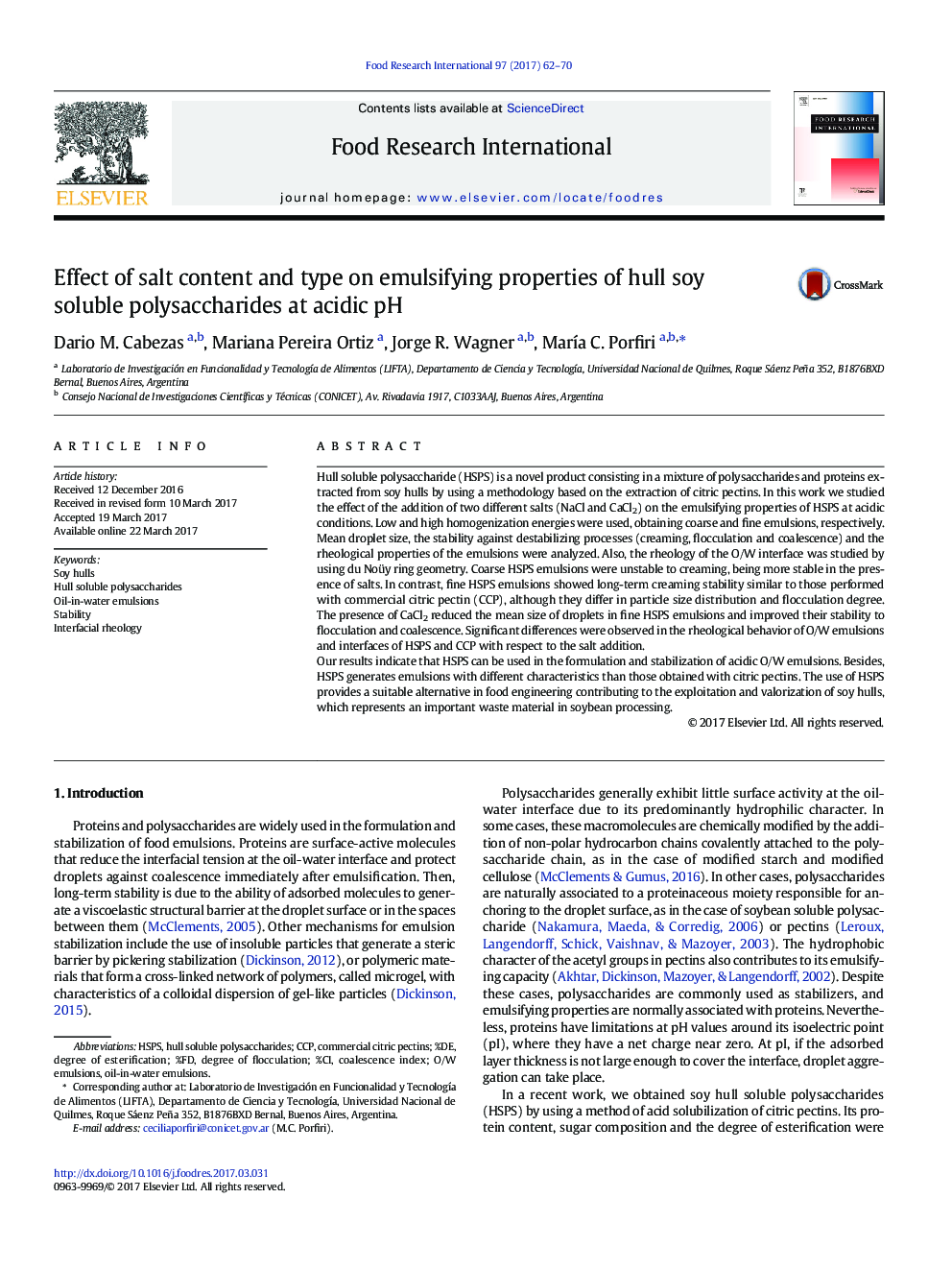| Article ID | Journal | Published Year | Pages | File Type |
|---|---|---|---|---|
| 5768208 | Food Research International | 2017 | 9 Pages |
â¢HSPS was obtained from soy hull by adapting a method of extraction of citric pectins.â¢HSPS fine emulsions showed long-term creaming stability.â¢HSPS and CCP emulsions differ in particle size distribution and flocculation degree.â¢In fine HSPS emulsions CaCl2 reduces the mean size of droplets.â¢In fine HSPS emulsions CaCl2 improves its flocculation and coalescence stability.
Hull soluble polysaccharide (HSPS) is a novel product consisting in a mixture of polysaccharides and proteins extracted from soy hulls by using a methodology based on the extraction of citric pectins. In this work we studied the effect of the addition of two different salts (NaCl and CaCl2) on the emulsifying properties of HSPS at acidic conditions. Low and high homogenization energies were used, obtaining coarse and fine emulsions, respectively. Mean droplet size, the stability against destabilizing processes (creaming, flocculation and coalescence) and the rheological properties of the emulsions were analyzed. Also, the rheology of the O/W interface was studied by using du Noüy ring geometry. Coarse HSPS emulsions were unstable to creaming, being more stable in the presence of salts. In contrast, fine HSPS emulsions showed long-term creaming stability similar to those performed with commercial citric pectin (CCP), although they differ in particle size distribution and flocculation degree. The presence of CaCl2 reduced the mean size of droplets in fine HSPS emulsions and improved their stability to flocculation and coalescence. Significant differences were observed in the rheological behavior of O/W emulsions and interfaces of HSPS and CCP with respect to the salt addition.Our results indicate that HSPS can be used in the formulation and stabilization of acidic O/W emulsions. Besides, HSPS generates emulsions with different characteristics than those obtained with citric pectins. The use of HSPS provides a suitable alternative in food engineering contributing to the exploitation and valorization of soy hulls, which represents an important waste material in soybean processing.
Graphical abstractDownload high-res image (281KB)Download full-size image
